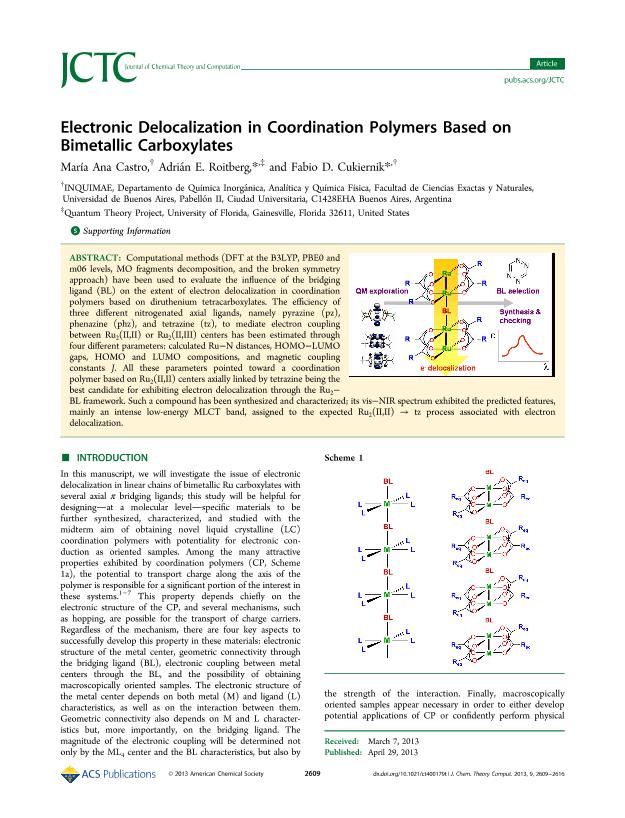Artículo
Electronic Delocalization in Coordination Polymers Based on Bimetallic Carboxylates
Fecha de publicación:
29/04/2013
Editorial:
American Chemical Society
Revista:
Journal of Chemical Theory and Computation
ISSN:
1549-9626
Idioma:
Inglés
Tipo de recurso:
Artículo publicado
Clasificación temática:
Resumen
Computational methods (DFT at the B3LYP, PBE0 and m06 levels, MO fragments decomposition, and the broken symmetry approach) have been used to evaluate the influence of the bridging ligand (BL) on the extent of electron delocalization in coordination polymers based on diruthenium tetracarboxylates. The efficiency of three different nitrogenated axial ligands, namely pyrazine (pz), phenazine (phz), and tetrazine (tz), to mediate electron coupling between Ru2(II,II) or Ru2(II,III) centers has been estimated through four different parameters: calculated Ru-N distances, HOMO-LUMO gaps, HOMO and LUMO compositions, and magnetic coupling constants J. All these parameters pointed toward a coordination polymer based on Ru2(II,II) centers axially linked by tetrazine being the best candidate for exhibiting electron delocalization through the Ru2−BL framework. Such a compound has been synthesized and characterized; its vis-NIR spectrum exhibited the predicted features, mainly an intense low-energy MLCT band, assigned to the expected Ru2(II,II) - tz process associated with electron delocalization.
Archivos asociados
Licencia
Identificadores
Colecciones
Articulos(INQUIMAE)
Articulos de INST.D/QUIM FIS D/L MATERIALES MEDIOAMB Y ENERGIA
Articulos de INST.D/QUIM FIS D/L MATERIALES MEDIOAMB Y ENERGIA
Citación
Castro, Maria Ana; Roitberg, Esteban Gabriel; Cukiernik, Fabio Daniel; Electronic Delocalization in Coordination Polymers Based on Bimetallic Carboxylates; American Chemical Society; Journal of Chemical Theory and Computation; 9; 6; 29-4-2013; 2609-2616
Compartir




